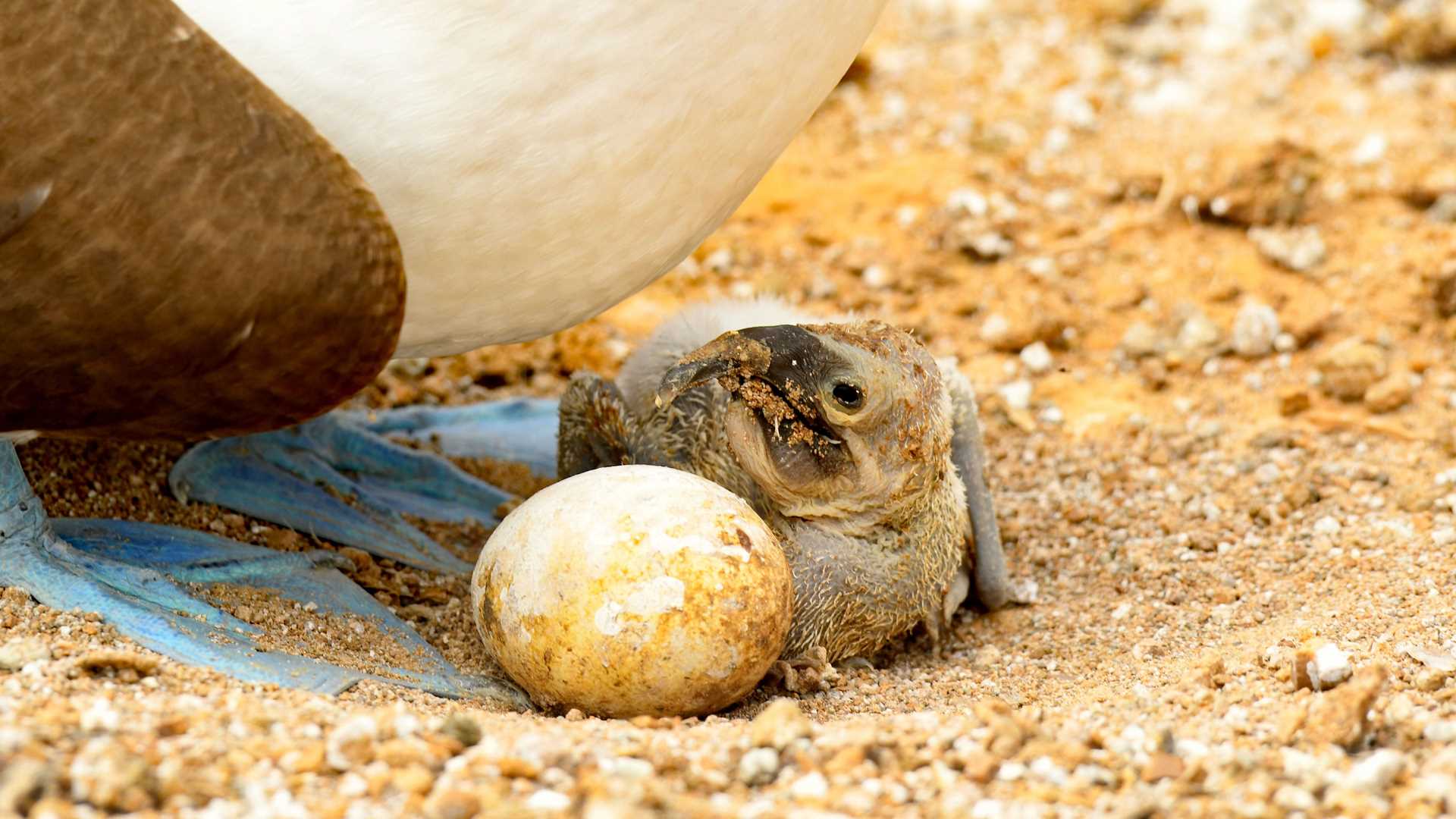Our week around the enchanted archipelago of Galapagos has been spectacular! Today was our last exploration to see the animals and plants that are unique to these islands; they are what make this place like no other on earth.
Early in the morning, we dropped anchor on Pitt Point at the northeast end of San Cristobal. The place is breathtaking, one of the favorite landscapes in Galapagos. The erosion is very visible here. Four million years ago, San Cristobal was formed by strong shield volcanoes in the west of Galapagos. We disembarked on a nice beach colonized by playful sea lions. We started to climb the mountain where many blue-footed boobies nest on the ground. Our goal was to spot the very famous red-footed boobies that also nest here. These red-footed birds nest in trees and are seen less often, but they are the largest population of birds living in Galapagos. Red-footed boobies are pelagic. They stay out fishing for a few days and catch their food miles away from the coast. They come back to land to feed a single chick that they leave very well protected in the branches of bushes. Our walk was the frosting on the cake of a week full of surprises and enjoyment. On our way back to the beach, we found a few lava lizards, mockingbirds, and finches. The lava lizards and mockingbirds are endemic to San Cristobal. They belong to the vast list of unique creatures that inhabit these islands, where the speciation is astonishing.
We cooled off by swimming in the sea and snorkeling with friendly sea lions. Then we returned to our ship to motor along the coast. Our guests enjoyed a special lunch made with products from local farmers.
We visited Cerro Brujo in the afternoon to end our week of exploration. We disembarked on a beautiful white sand beach. The sand is so fine and white that it feels like flour as you walk along. We had a memorable time. It was so relaxing to sit on the sand in solitude and enjoy the silence. It is the perfect place to close your eyes and feel the sounds of nature around you, to contemplate the blue of the sky, to observe a few seabirds fishing, or to just admire the beauty of the scenery. What a great finale onboard National Geographic Endeavour II.







